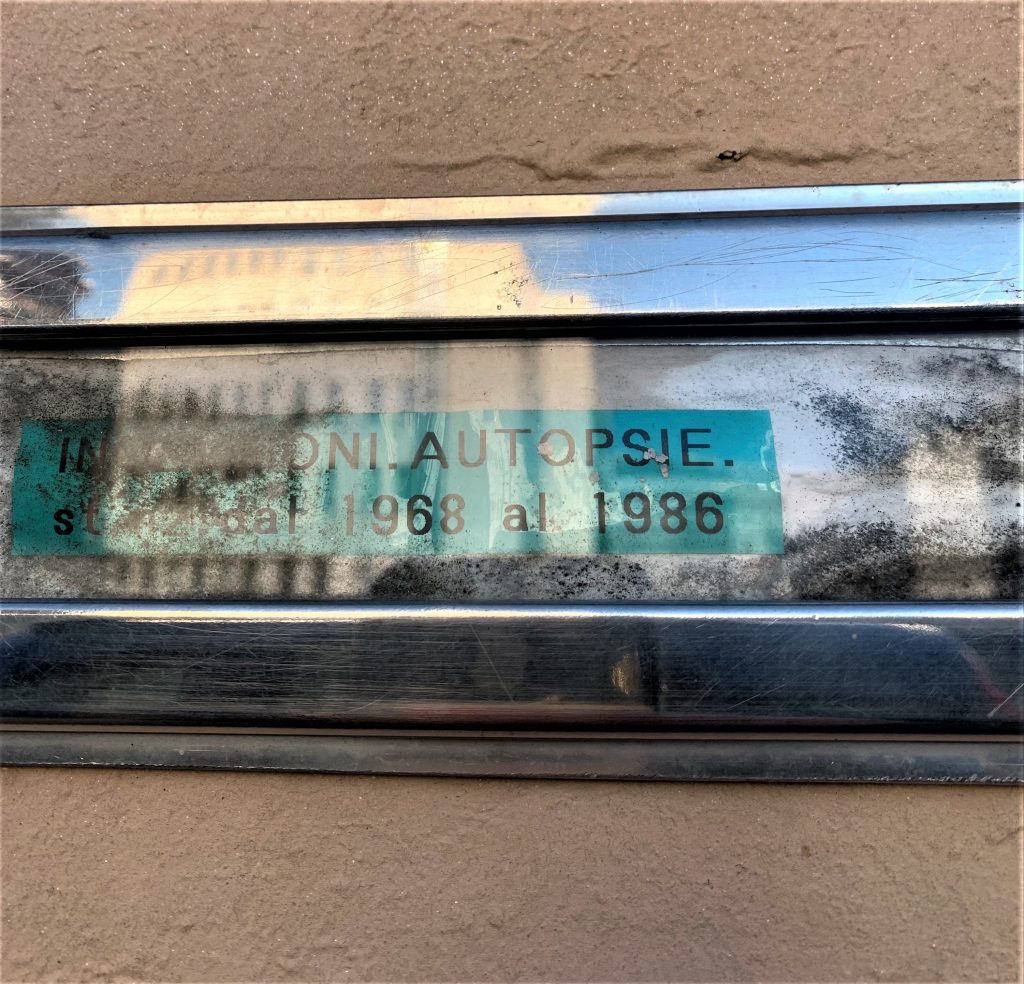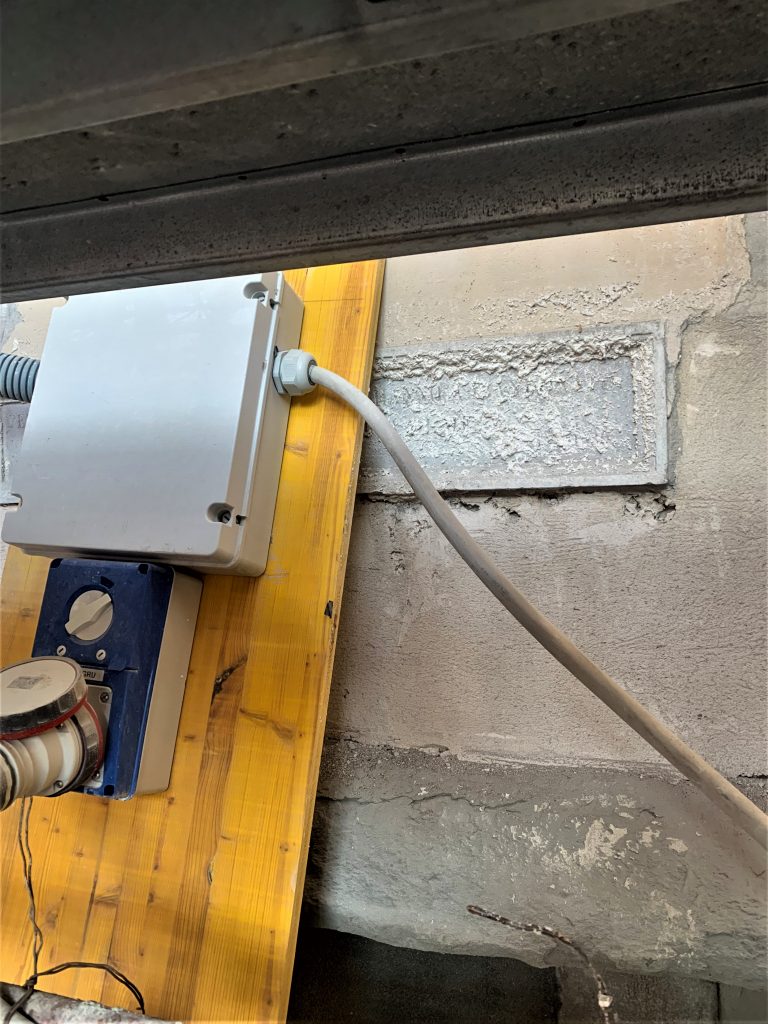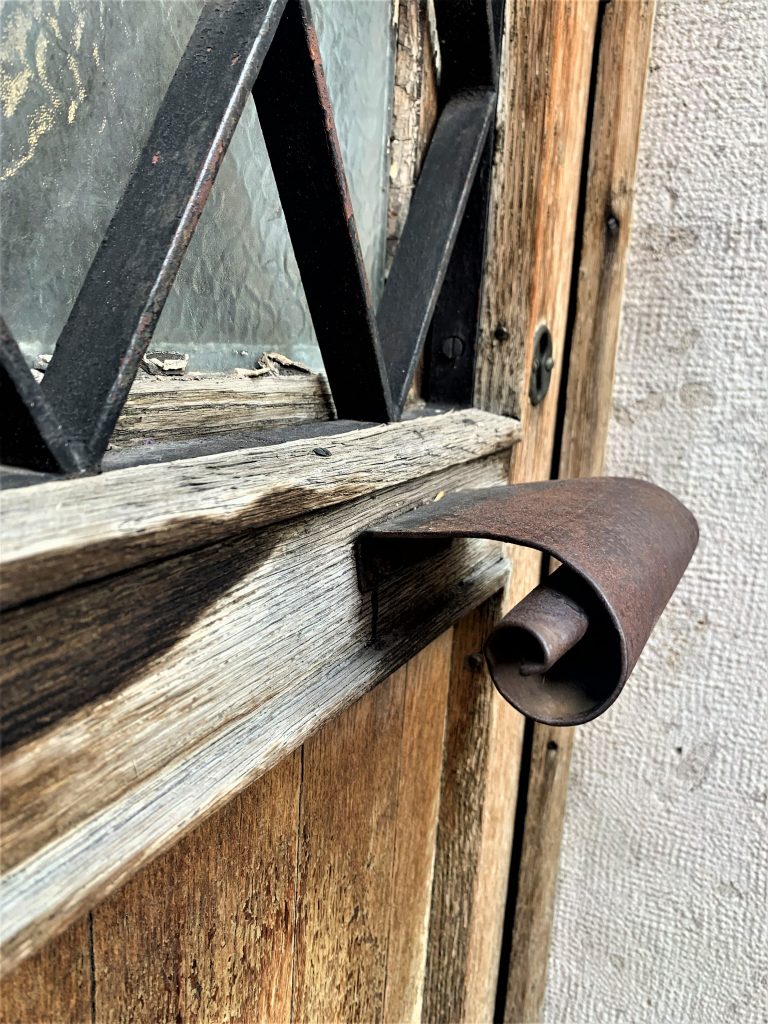by Alessandra Ressa
Via della Pietà (Street of Compassion) is today an unattractive place with many abandoned medical offices running along centrally located Ospedale Maggiore.
Until the early 1990s it was a busy, vital hub for the hospital, as several departments were conveniently located in these now dilapidated buildings.
The beautiful hospital chapel, Cappella della Pietà, was also a well-known, if grim destination for Triestini. This is were they could mourn their dead before burial, just next door to the autopsy rooms. But Via della Pietà hides another surprise, probably one of Trieste’s best preserved secrets.

Not many people know that in Via Pietà, until 1875, there was a special wooden wheel directly connected to a narrow tunnel on a side wall of Ospedale Maggiore (then called Civico Nosocomio). Known as ruota degli esposti (or the revolving basket), it was a famous “drop-off” point for abandoned infants.
Unwanted babies were placed almost daily inside this wooden mechanism. The weight of the infant would activate the rotation, connected to a bell which would alert the hospital personnel. This was also a way to maintain the anonymity of the carriers.
The orphans left at the hospital were then given to young local mothers who received money to nurse them together with their own babies. Once the nursing period was over, the children were taken to orphanages and given out for adoption. Most of them were the result of extra-marital affairs of the rich Triestini.
Several were newborns of the many prostitutes whose international clientele crowded the port of Trieste. They were mostly adopted, in exchange for a modest sum of money, by Carso’s shepherds and farmers, always in need of extra help in the fields.
Both the revolving wheel and its passage were walled, but a stone inscription that had stood at the very top of the mechanism since its very beginning has miraculously managed to survive. That is until just a few weeks ago, when incautious workers busy in the renovation of the outer facades of the hospital splattered it with grout. Although barely visible, you can still read some of the words.

The inscription is taken from the Bible, Psalm 27:10. Perchè il padre mio e la madre mia mi hanno abbandonato? Ma il Signore si è preso cura di me (Though my father and mother forsook me, the Lord will receive me). Although it may seem only logical to associate the name of the street to the presence of the revolving basket for abandoned children, some historians argue that its origin is much older. According to this version, the street was named in the late 1700s after a pre-existing chapel later demolished to make room for the hospital.

It is not known how many children went through the revolving basket of Ospedale Maggiore during the years it was in service. We can only imagine that there must have been a few, given social prescriptions and lack of birth control back then. Children born out of wedlock were a scandal, or a burden. Single mothers were outcasts to be frowned upon. Thankfully, times have changed.

Walking along lower Via della Pietà with its abandoned medical offices does give the wanderer a sense of uneasiness. The high stone wall hiding the old chapel must have been there forever, while the grounds where the shrine stands, accessible from the street through an automatic ‘apriporta’ button, is now being used as a parking lot.




























